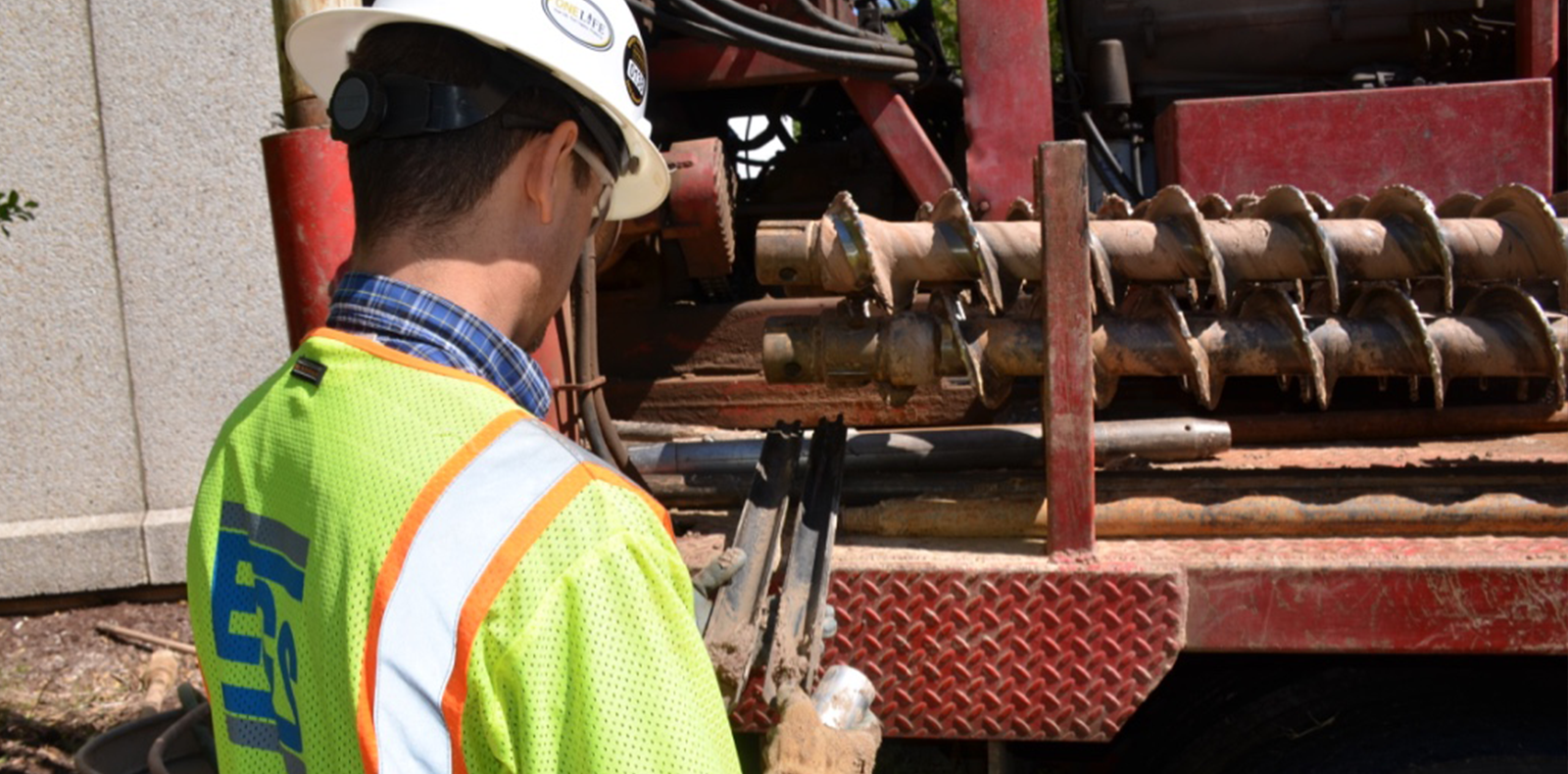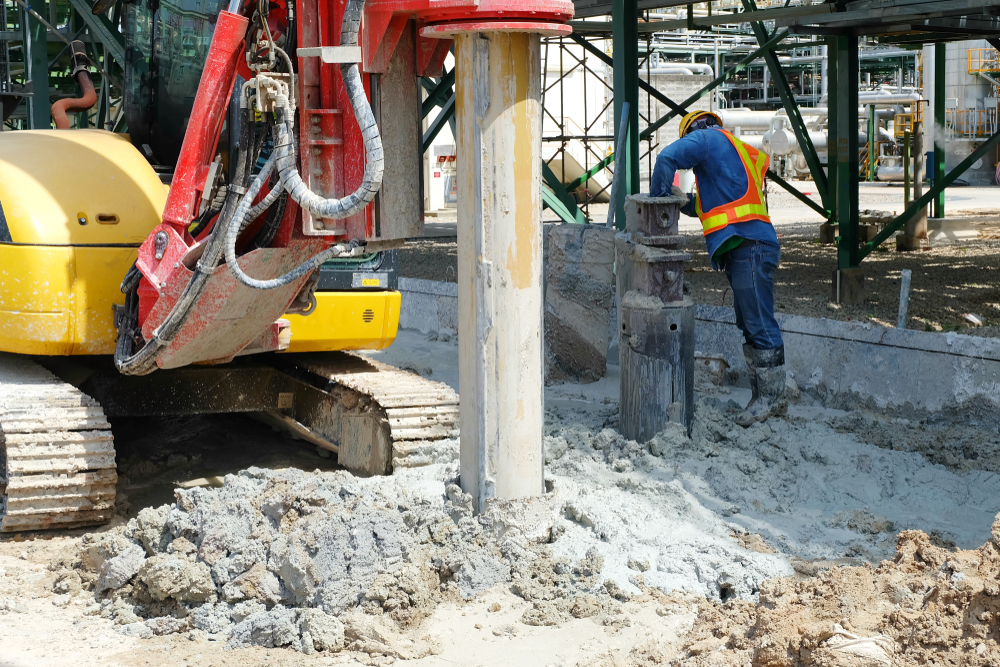The Impact of New Technologies on the Geotechnical Industry
Wiki Article
An In-Depth Consider the Scope of Technique for Geotechnical Designers and Their Impact on Project Expediency and Risk Reduction
The range of practice for geotechnical designers includes a series of essential obligations that directly affect project usefulness and risk monitoring. From carrying out thorough site examinations to evaluating subsurface problems, their competence is important fit structure design and building and construction techniques. As tasks progressively run into complex geological obstacles, understanding the nuanced function of these specialists becomes necessary for guaranteeing effective end results. However, the ramifications of their job extend past mere analysis; they can substantially alter the trajectory of a task. What particular approaches do geotechnical designers employ to navigate these complexities properly?Functions and Obligations of Geotechnical Engineers
Geotechnical engineers play an essential duty in the structure of construction projects, ensuring that structures are built on solid ground. Their responsibilities encompass a range of activities necessary for analyzing dirt and rock homes, which straight influence project expediency and security. Initially, geotechnical designers conduct website examinations to gather important data pertaining to subsurface problems. This consists of exploration boreholes, tasting soil and rock, and conducting in-situ examinations to identify product qualities.
Partnership is additionally a key facet of their function; they work carefully with civil engineers, designers, and ecological specialists to ensure that geotechnical factors to consider are integrated right into total project planning. Ultimately, the competence of geotechnical designers is indispensable in advertising the safety, sustainability, and feasibility of building ventures.
Secret Locations of Geotechnical Evaluation
Soil examples and geological studies are fundamental components in the crucial areas of geotechnical evaluation. These tasks provide vital information regarding the chemical and physical homes of the subsurface products, enabling designers to analyze website conditions precisely. The evaluation commonly incorporates soil classification, compaction, shear stamina, and permeability, every one of which are important for comprehending the habits of dirts under various loading problems.Another significant area of focus is slope security analysis, which evaluates the risk of landslides or dirt erosion. This entails evaluating the geometry of inclines, soil kinds, and groundwater conditions. Website characterization is additionally important, as it includes a thorough investigation of the site's history, consisting of previous building and construction, contamination, and all-natural dangers.
Additionally, groundwater analysis plays an important role in geotechnical assessment, affecting both the style and building stages. Understanding the groundwater table, circulation direction, and potential changes is important for efficient structure layout and stormwater management.
Together, these vital locations of geotechnical analysis create a comprehensive structure that educates decision-making processes, ensuring risk-free and sustainable design practices while decreasing prospective dangers associated with subsurface problems.
Effect on Job Usefulness
The feasibility of a construction project hinges dramatically on the insights acquired from geotechnical examinations. These examinations give important information relating to dirt properties, groundwater problems, and subsurface attributes, which are critical for establishing the viability of a website for construction. By evaluating elements such as dirt bearing capacity, negotiation capacity, and slope stability, geotechnical designers play an essential duty in assessing whether a project can continue as prepared or if modifications are necessary.Furthermore, the results of geotechnical research studies directly affect job design and building and construction methods. Accurate geotechnical information permits notified decision-making, ensuring that architectural styles accommodate site-specific problems and abide by governing demands. This procedure assists in optimizing resource allotment, thus decreasing unforeseen delays and cost overruns.
Furthermore, a comprehensive geotechnical evaluation enhances the general stability of a project by determining possible challenges early in the preparation stage. By addressing these difficulties proactively, stakeholders can boost the project's possibility of success, making certain that it meets both functional and monetary objectives. In summary, the payments of geotechnical designers are integral to establishing job expediency, therefore preparing for efficient task execution.
Danger Reduction Strategies
While construction jobs inherently include different unpredictabilities, implementing effective danger mitigation methods can dramatically minimize potential issues occurring from geotechnical aspects. Geotechnical engineers play a critical function in determining, assessing, and resolving threats connected with subsurface conditions, making certain that tasks continue efficiently and stay within budget plan.One primary strategy involves thorough website examinations, which include soil sampling, in-situ screening, and research laboratory analysis. These assessments provide critical data on dirt make-up, habits, and toughness, enabling designers to create foundations and earthworks that are both efficient and secure. Using sophisticated modeling strategies, such as finite element analysis, allows designers to predict just how soil and architectural interactions might progress under different loading conditions.
An additional efficient mitigation method is the implementation of appropriate style modifications, such as making use of reinforcement strategies or adopting different building techniques, which can boost stability and lower vulnerability to geotechnical problems. In addition, continuous tracking of website problems during building can promote timely interventions, therefore minimizing the possibility of unanticipated complications.
Situation Research Studies and Real-World Applications
Study offer valuable understandings right into the practical applications of geotechnical design concepts and highlight the effectiveness of risk mitigation methods in real-world scenarios. One noteworthy instance is the building and construction of the Centuries Dome in London, where cutting-edge ground therapy techniques were implemented to deal with difficult soil conditions. By utilizing deep concrete mixing and soil stabilization techniques, engineers effectively produced a steady foundation that reduced prospective settlement risks, guaranteeing the job's feasibility.Another case moved here is the stabilization of the hill for the brand-new freeway in The golden state, where substantial slope analysis and monitoring were employed. Geotechnical designers made use of preserving wall surfaces and drain systems to handle groundwater, substantially minimizing the danger of landslides. This positive method not only preserved the honesty of the freeway however also enhanced public safety and security.
In addition, the development discover this info here of a major airport terminal showed the relevance of thorough site investigations. geotech engineer. Geotechnical designers determined troublesome dirt layers and suggested particular foundation layouts, resulting in a successful task completion with minimized hold-ups. These situation research studies emphasize the important function that geotechnical engineers play in analyzing dangers and carrying out reliable solutions, therefore boosting job expediency and total success
Conclusion

By examining elements such as soil bearing ability, settlement potential, and incline security, geotechnical engineers play a crucial function in assessing whether a task can continue as prepared or if alterations are required.
In summary, the contributions of geotechnical engineers are integral to developing job usefulness, thus laying the foundation for reliable project execution.
Geotechnical designers recognized troublesome dirt layers and suggested details foundation layouts, leading you could try these out to a successful task completion with lessened hold-ups. geotechnical industry. These case research studies emphasize the vital duty that geotechnical engineers play in examining threats and executing reliable solutions, thus boosting task usefulness and overall success
With reliable risk mitigation methods and the application of innovative modeling techniques, geotechnical engineers boost project outcomes and lessen threats related to soil and groundwater problems.
Report this wiki page